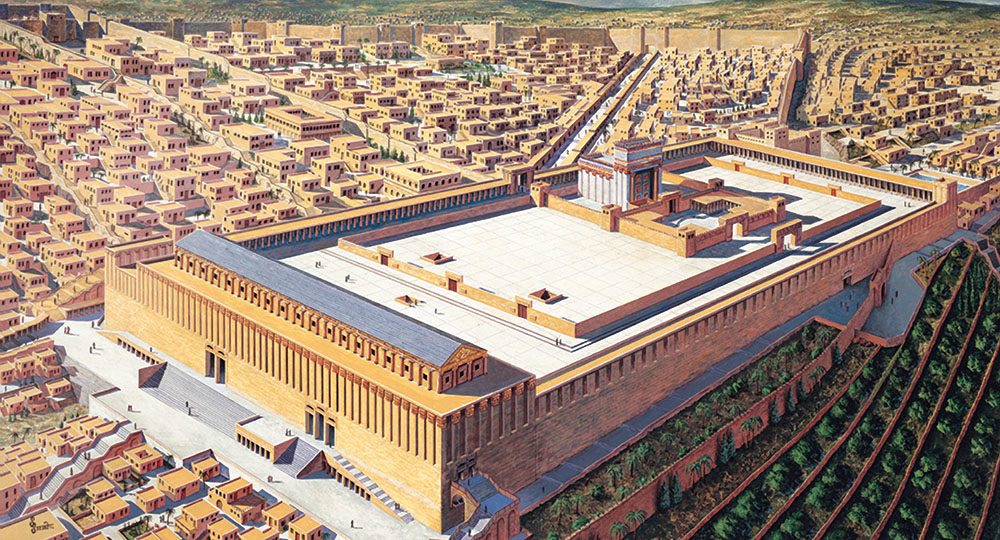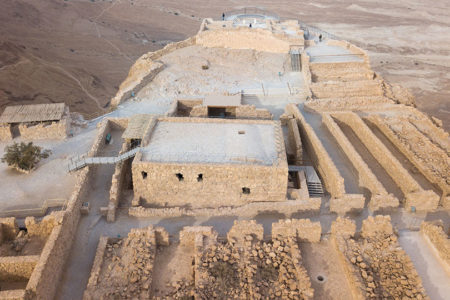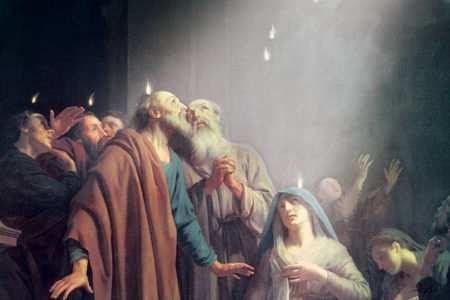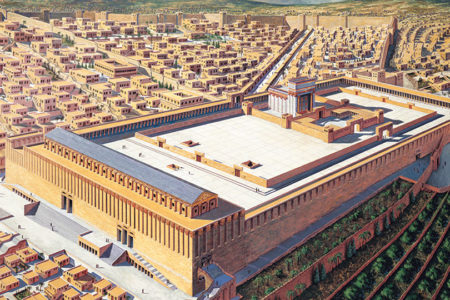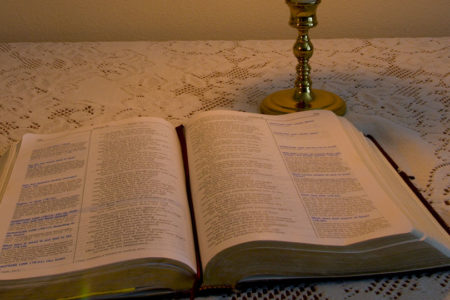At the Beginning
God designed the church of Jesus Christ to display His glory and beauty to all who see those gathered in His name. Heavenly beings, both angels and demons, watch the church on Earth and so observe God’s wonderful wisdom in His redemptive plan that unites Jews and Gentiles in the Messiah. The gospel of Jesus Christ is able to unify people who in ages past were separated from each other.
This extraordinary, called-out body known as the church began on Pentecost, 50 days after Easter Sunday.
Anticipation
The church was not present during Jesus’ lifetime on Earth. In fact, Jesus used the word church only twice in the Gospels. The first reference predicted its beginning: “And I also say to you that you are Peter, and on this rock I will build My church, and the gates of Hades shall not prevail against it” (Mt. 16:18). Jesus told His disciples that someday He would establish His own assembly of believers. While on Earth, He worshiped in synagogues and in the Temple. He never attended a church, since none existed.
Jesus’ second mention of the church concerned how its members should approach and woo back to godliness someone who lives sinfully: “And if he refuses to hear them, tell it to the church. But if he refuses even to hear the church, let him be to you like a heathen and a tax collector” (18:17). Our Lord taught His disciples how the yet-future church would operate, and He prepared the apostles who would form the foundation of the church after His death, burial, resurrection, and ascension.
Arrival
After Jesus’ resurrection, He lived on Earth for 40 days and taught His followers about God’s Kingdom. He told them to stay in Jerusalem until the Father’s promise would be fulfilled with the pouring out of the Holy Spirit, and they would “be baptized with the Holy Spirit” (Acts 1:5). This spectacular event was predicted by Old Testament prophets who looked ahead to when the New Covenant would be inaugurated and God would begin a new work on Earth (Isa. 32:15; Ezek. 39:29; Joel 2:28–29).
God’s program under the Mosaic Law ended when Jesus died and the veil of the Temple was torn in two (Mt. 27:51). The new dispensation, the Church Age, began as the Spirit came upon Jewish believers who met in an upper room in Jerusalem. A noisy wind filled the room as fiery tongues rested on each believer (Acts 2:1–4). The church was born.
Peter confirmed the church began on that day as he explained the later salvation of Cornelius and his family: “The Holy Spirit fell upon them, as upon us at the beginning” (11:15, emphasis added).
There was no church before the day of Pentecost; it was birthed by God in fulfillment of His promise of the New Covenant to provide the Holy Spirit and forgiveness.
This new work of God was something the Old Testament prophets never clearly understood. Although they did envision Gentiles submitting to the God of Israel, they never foresaw that both Gentiles and Jews would do so on equal footing. The apostle Paul explained:
The mystery of Christ [Messiah]…in other ages was not made known to the sons of men, as it has now been revealed by the Spirit to His holy apostles and prophets: that the Gentiles should be fellow heirs, of the same body, and partakers of His promise in Christ through the gospel (Eph 3:4–6).
In the present age, God dispenses His blessings to all who believe the gospel; both Jewish and Gentile people stand as equals before Him.
Paul illustrated this amazing truth by contrasting the Temple in Jerusalem with the new temple being built by Jesus Christ:
Now in Christ Jesus you who once were far off have been brought near by the blood of Christ. For He Himself is our peace, who has made both one, and has broken down the middle wall of separation (2:13–14).
The Temple barricade, called the soreg, formed a fence around the outer Court of the Gentiles to prevent Gentile access into areas where only Jewish people could go. Archaeologists have discovered a sign written in Greek that warned Gentiles against encroaching past this barrier. It reads,“No foreigner is to go beyond the balustrade and the plaza of the Temple zone. He who is caught will have himself to blame for his death which will follow.”1
Jesus’ sacrificial death created His church as “one new man from the two, thus making peace” (v. 15). Through Jesus, Founder of the church, both Jewish and Gentile believers “have access by one Spirit to the Father. Now, therefore, you are no longer strangers and foreigners, but fellow citizens with the saints and members of the household of God” (vv. 18–19). It is as though all who wished to approach God in His Temple were permitted; no more barriers, no more racial differences, and no more physical buildings. The church now fulfills the role of the ancient Temple, but this new temple is built of believers from every race throughout the world. “The whole building, being fitted together, grows into a holy temple in the Lord, in whom you also are being built together for a dwelling place of God in the Spirit” (vv. 21–22).
Aberrations
Some Christians, however, do not believe the church began at Pentecost. They see it as existing in the days of the Old Testament. Robert L. Reymond, a founding faculty member of D. James Kennedy’s Knox Theological Seminary, wrote, “The church in Scripture is composed of all the redeemed in every age who are saved by grace through personal faith in the sacrificial work of Jesus Christ.”2
The King James Version of the Bible reflects this interpretation in its translation of Acts 7:38, which refers to the people of Israel as “the church in the wilderness.” This view assumes a strong continuity between God’s people before and after the cross. Wrote Reymond, “The true church of the Old Testament was the spiritual seed of Abraham.”3 Such theologians use the term Israel to identify the people of God in both Testaments, and they use the word church for both groups as well.
Although there are similarities and parallels between God’s people both before and after the cross, using the same terms to identify them confuses their differences. More important, the Scriptures never refer to Christians by using the name Israel, nor does the New Testament ever refer to the people of Israel as the “church” of Jesus Christ.4 Only those who subscribe to Replacement Theology are comfortable using the terms church and Israel interchangeably.
Some Jewish Christians fail to appreciate the unity of both Jewish and Gentile believers in the body of Christ. They rightly emphasize the Jewish roots of the Christian faith. However, they encourage submission to the Law of Moses and rabbinic traditions. In so doing, they erect barriers between Jewish and Gentile Christians in the form of dietary laws, rituals of worship, Sabbath keeping, and holy days.
In keeping Jewish laws and traditions, Messianic synagogues disrupt the unity of Jews and Gentiles in the one true church. Both Jesus and Paul firmly addressed these issues (Mk. 7:19; Rom. 14:5; Gal. 4:9–11; Col. 2:16–17). The solution to the “gentilization” of the church is not to establish separate congregations composed mainly of Jewish believers who keep Jewish traditions. Rather, it is for Jewish and Gentile believers to welcome each other as equals in the church. Christian churches must learn to appreciate their Jewish roots and welcome the influence of Jewish believers. “The church won’t improve its Jewish sensitivity if Jewish believers abandon it.”5 When both groups exist in distinction and harmony within a church, the oneness of the body of Christ shines. In the church, “there is neither Jew nor Greek…for you are all one in Christ Jesus” (Gal. 3:28).
Attraction
God designed the church of Jesus Christ to display His glory and beauty. Paul’s goal was to “make all see what is the fellowship of the mystery, which from the beginning of the ages has been hidden in God who created all things through Jesus Christ; to the intent that now the manifold wisdom of God might be made known by the church to the principalities and powers in the heavenly places” (Eph. 3:9–10).
If the spirit world watches and wonders about the church, so do people in the material world here on Earth. The church, even when struggling and feeble, represents a new creation in submission to its heavenly Lord.
Every bride is beautiful at her wedding. Likewise, the church, as Jesus’ bride, is being transformed into beauty to one day meet her heavenly Bridegroom. Jesus is already in the process of sanctifying His bride, so “that He might present her to Himself a glorious church, not having spot or wrinkle or any such thing, but that she should be holy and without blemish” (Eph. 5:27). As believers pursue holiness and deepen their love for their Bridegroom, the bride of Christ fulfills her ultimate destiny of holiness and beauty and the unification of Jews and Gentiles in the bonds of Calvary.
ENDNOTES
- “Soreg Inscription” <bible-history.com/gentile_court/TEMPLECOURTSoreg_Inscription.htm>.
- Robert L. Reymond, A New Systematic Theology of the Christian Faith (Nashville: Thomas Nelson, 1998), 805.
- Ibid., 806.
- Galatians 6:16 refers to “the Israel of God” as a separate group of Jewish believers in addition to those who “walk according to this rule.”
- William Varner, “Messianic Congregations Are Not Necessary,” in How Jewish Is Christianity? 2 Views on the Messianic Movement (Grand Rapids: Zondervan, 2003), 48.
